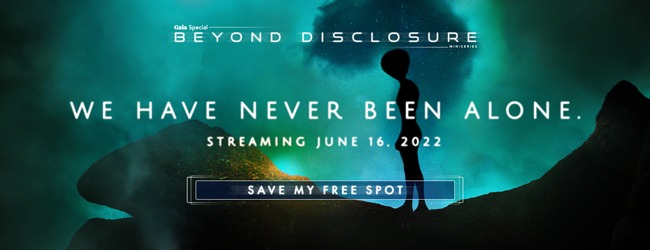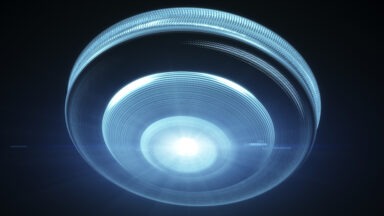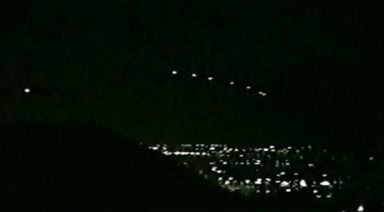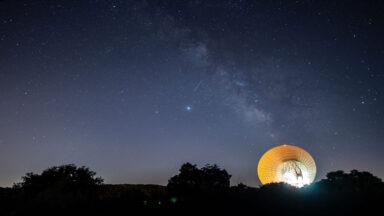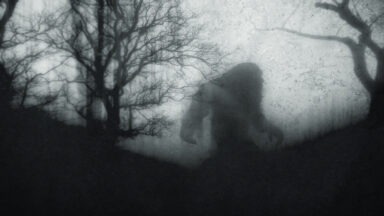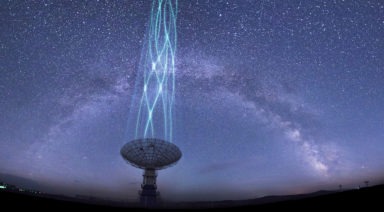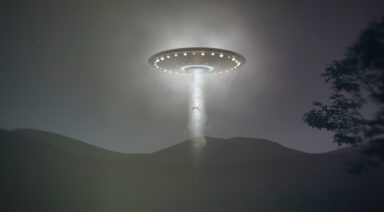Scientist’s Claim of UFO Fuel Source Verified Decades Later

Bob Lazar—perhaps no other name is as provocative in ufology as the man who introduced the world to the government’s most classified military facility, colloquially known as Area 51. Claiming to have once been employed at a secret test site in the Nevada desert, Lazar alleges he worked to reverse engineer one of nine alien spacecraft he says are hidden there.
The story begins in the 1980s, when Lazar was contracting as a physicist at Los Alamos National Labs in New Mexico — the infamous home of the Manhattan Project where the nuclear bombs dropped on Hiroshima and Nagasaki were designed. Prior to his employment at Los Alamos, Lazar claims to have studied physics at MIT, and electronic technology at CalTech.
While at Los Alamos, Lazar recounts a process in which he was heavily vetted and specifically asked about his interests outside work, including the construction of a particle accelerator he built in his master bedroom. Soon, he said, he was tapped by military defense contractor EG&G to conduct highly-secretive work at a clandestine site within Area 51 known as S-4. Lazar says his superiors worked to get him what they called a “Majestic” clearance level in order to enter the facility.
In 1989, Lazar decided to blow the whistle and share his story on Las Vegas news station KLAS-TV, obfuscating his face and using the pseudonym “Dennis,” in an exposé with investigative reporter George Knapp. Eventually, he would shoot a follow-up with his face and true identity exposed, while also revealing that “Dennis” was the name of his alleged supervisor at S-4.
Since then, Lazar has been in some way related to countless attempts to either prove or debunk the conspiracy that the U.S. government (and/or a defense contractor) is in possession of highly advanced spacecraft not of this world, and that it has kept this knowledge hidden from the public for decades.
While the amount of media attention on Lazar’s story has fluctuated over the years, a recent resurgence in interest peaked with the release of filmmaker Jeremy Corbell’s 2018 documentary “Bob Lazar: Area 51 & Flying Saucers.”
In a subsequent appearance on the “Joe Rogan Experience” podcast, tallying more than 37 million YouTube views, Lazar recounted his story showing remarkable consistency in the minutiae of a chronicle he’s told for decades. The discussion also came at a time in which some of those details appeared to be validated by reports of Navy pilots encountering “Tic-Tac”-shaped craft that exhibited behavior exponentially more advanced than our most state-of-the-art aerospace technology.
Bob Lazar’s Academic and Professional Credentials
Famed ufologist Stanton T. Friedman was considered one of the most credible researchers in the field until his death in 2019. Friedman’s legitimacy came from the fact that he was not only a nuclear physicist but also the original civilian investigator of the Roswell UFO incident, which he concluded was, in fact, the crash site of a spacecraft of extraterrestrial origin.
Friedman was among Lazar’s detractors whose reasoning stemmed from research he conducted into a list of graduates at MIT and Caltech during the times Lazar claimed to have been enrolled there. He said there was no evidence Lazar ever attended either school or that he ever worked at Los Alamos National Laboratory.
Friedman acknowledged that a phone book from the lab during that period did show Lazar’s name, though he discounted it saying it appeared he only worked as a technician for a company contracting for the facility.
These cloudy credentials are what most skeptics point to when trying to discredit Lazar’s story, and rightfully so, this is one area he has begrudgingly contended with, reminding us how much power the government has when it wants to erase someone’s identity. Lazar often describes how afraid he felt seeing his work and education history disappear from official records right in front of his eyes. Not to mention the overt threats he says he received from former colleagues and government agents.
In response to those questioning Lazar’s background, Corbell and Knapp have gone to extensive lengths to prove his credentials, and they’ve dug up some convincing evidence to confirm his purported pedigree.
In addition to the Los Alamos phone book containing Lazar’s name, Knapp discovered newspaper clippings from the Los Alamos local newspaper from the same years, in which Lazar was interviewed on the front page for putting a jet engine on his Honda Civic. The paper describes Lazar as a physicist working at Los Alamos National Lab.
More recently, Corbell was able to conduct an interview with a former colleague of Lazar’s from Los Alamos, Dr. Robert Krangle, who confirmed working with him and stated it was his belief that Lazar was in fact a physicist working on projects tangential to his own at the time. Dr. Krangle’s credibility can be seen in his successful career as an engineering physicist who invented the laser range finder and continues to contract for Los Alamos Labs today.
Advanced Technology and Element 115
One of the biggest claims Lazar makes when discussing the flying saucer at Area 51, is the fuel source used to generate its ‘antigravity propulsion.’ Lazar claimed in 1989 that Element 115 — a yet-to-be-discovered element on the periodic table — powered antimatter generators found on the craft. Roughly 25 years later, this element was synthesized by a joint team of Russian and American scientists working at a nuclear research facility in Russia. They named the highly radioactive and quickly decaying element Moscovium, otherwise known as Ununpentium. Lazar says the scientists reached out to consult with him when they very briefly harnessed the element.
But skeptics said this still didn’t justify Lazar’s claim, as the highly unstable isotope of the element found at the lab has a half-life of just 0.65 seconds, not nearly long enough to be a stable fuel source. Lazar responds to this by saying many elements have both stable and highly unstable isotopes, and it’s possible we haven’t yet discovered a stable isotope of Moscovium.
Lazar also referred to the materials used to construct the craft as metamaterials not from this planet. In a 2019 article published in the New York Times, a claim was made that the Pentagon had in its possession metamaterials from “off-world vehicles not made on this Earth” it has been studying for some time.
But that’s not all the Defense Department has admitted on the topic over the past few years; the biggest bombshell was the existence of an ongoing, multimillion-dollar program to study UFOs, in addition to the footage and first-hand testimony from Navy pilots like Cmdr. David Fravor, who described encounters with UFOs performing mind-boggling maneuvers and ostensibly defying known laws of physics. Interestingly, footage in these videos shows these craft flying in manners and exhibiting propulsion systems consistent with those described by Lazar decades earlier.
“The craft that I worked on, that when it’s going to travel a long distance, that is how it operates. It puts its belly to the target and then brings all of the amplifiers to power, and you know it shoots off in that direction. It doesn’t fly as it would in a science-fiction movie. It flies with the belly, the bottom, forward,” Lazar says in Corbell’s documentary.
“There’s no question in my mind, that’s the way the craft operated,” he said. “It’s the exact same propulsion system.”
Lastly, there’s another facet of Lazar’s original story, which at first sounded like science fiction, but has since been proven to be an advanced technology used only at secret government bases during a short window of time — the bone density hand scanner.
Lazar claimed that whenever he entered the S4 facility where he studied these flying saucers, he had to put his hand on a bone density scanner with a powerful light that shone through the bones in his hand. The device measured the density and shape of the bones in his hand and fingers to confirm his identity, before providing his credentials to get into the facility. He also mentioned that this device didn’t always work very well and created a bit of a bottleneck in allowing employees entrance.
Interestingly, it has come to light that this technology, which is now defunct due to its consistently inaccurate readings, was found to have been used at a highly classified military base where the F-117 Nighthawk was developed — a classified military base at the Tonopah Test Range Airport, which happens to be another facility within the Area 51 complex.
Knowing he hadn’t seen this technology since his days at S-4, Corbell surprised Lazar with images of the scanner, while also testing to see if he could identify what he was looking at. His genuine reaction can be seen in the documentary.
But is all this enough to prove the legitimacy of Lazar’s story? Not definitively. Without any solid physical evidence, the only thing we have to rely on is his word and poise in telling the same consistent story over several decades. Still, this could never be enough to be considered definitive proof.
But as new pieces of disclosure continue to be released to the public that fit Lazar’s descriptions, it makes it harder to dismiss the claims of a man who never wanted the limelight and attention that came from divulging such an explosive revelation.
New Legislation Could Open Floodgates of Government UFO Reports

The US government just made it easier to report UFOs, possibly releasing people from non-disclosure agreements. Will this open the floodgates of information?
As part of the annual defense spending bill, within the National Defense Authorization Act for 2023, the House just approved an amendment that would make it easier for current or former members of the military, government-employed civilians, and contractors to report UFOs or UAPs as the government now calls them.
The measure was sponsored by Reps. Mike Gallagher of Wisconsin and Ruben Gallego of Arizona, who have been among those in Congress calling for more transparency into UFOs.
The amendment would create a secure system for reporting any UFO phenomena and protect those who come forward from any repercussions.
Gallagher told Politico, “I believe it’s possible that folks may be precluded from being fully transparent with congress due to their being bound by non-disclosure agreements… if that’s true, I want to make sure that there’s no technical reason preventing them from speaking to us.”

